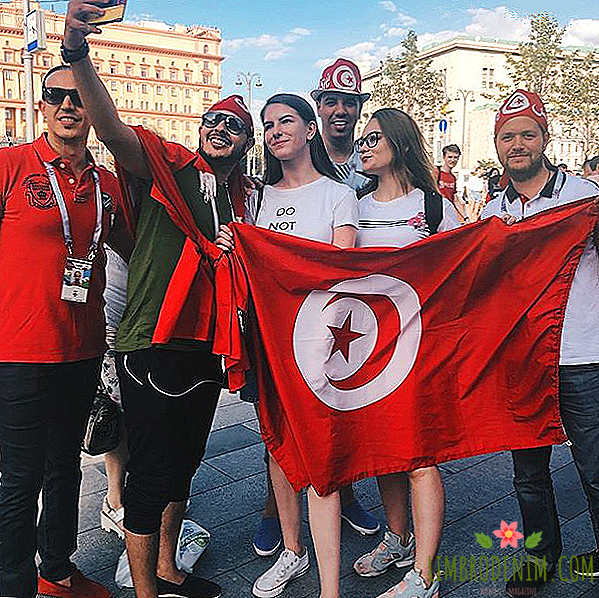The story of death and humiliation: How Irish women fought for the right to abortion for 35 years
A referendum was held in Ireland on May 25 on the abolition of the 8th amendment to the country's constitution - in fact, it was a referendum on the resolution of abortions. Many find it hard to believe that in a country where same-sex marriage is legalized, the prime minister is openly gay, and the first woman took the office of president in 1990, until 2018, abortions were completely banned, but this is so.
The history of limiting reproductive rights in the country is extremely rich. To understand the position of women in Ireland, one need only read these two points of the constitution of the 37th year still in force (Article 41, part 2):
"The state recognizes that with its life at home a woman gives the State support, without which public benefit cannot be achieved. Therefore, the State should make efforts to ensure that mothers do not feel an economic need to engage in work that distracts from their domestic responsibilities."
As it is easy to guess, the same constitution, although it separated the state from religion, guaranteed a very large influence of the Catholic Church on the daily life in the country. The subsequent changes in the laws of neighboring Britain only strengthened the faith of the Irish in the need to keep Catholic roots and not to succumb to the "pernicious" influence of the British or Americans. In the 1960s, contraception and divorce were completely banned, there were on average (!) Four children in families, and less than 3% of children were born out of wedlock.
The changes gradually took place, but according to the principle “a step forward, two steps back”: in 1980, contraception was legalized with a view to “family planning”, and since 1985, condoms were no longer sold according to prescriptions — however, in 1983, The 8th amendment, enshrining in the constitution the equal rights of the unborn child and mother, that is, completely prohibiting abortion, except in cases of imminent threat to the life of a woman. The initiators of the introduction of this item followed the jurisprudence in the United States and Britain and feared that without sticking the most stringent wording, precedents could lead to the actual legalization of abortions. On the referendum, 67% of the Irish people voted for this.
In fact, abortions were available - the bulk of them accounted for illegal pills or travel to England. In British Northern Ireland, abortion is also prohibited, so it was necessary to fly or sail to a neighboring island. The tragic and humiliating journey by plane or ferry has become a symbol of the collective injury of Irish women: since 1980, at least one hundred seventy thousand women have made it. In the 80s, against the background of economic decline, there were several loud tragic deaths of girls who could not pay for the ticket and procedure abroad, who tried to hide the pregnancy or give birth in secret.
The case of Ann Lovett from a tiny town in Longford is typical: a fifteen-year-old schoolgirl, having become pregnant, did not know what to do, and decided to give birth in a secluded grotto not far from the school. A few hours later, the girl and her dead child were found by passersby. Ann failed to save. After covering Lovett's death in the media, journalists began to receive hundreds of letters with similar stories, which caused a wave of discussions and controversies: society began to admit to itself a huge problem, which had previously been taken to be silent. However, legislative changes did not happen. Moreover, in 1986, 63% of citizens at the next “ethical” referendum voted against the abolition of the divorce ban.
In the 90s, the turning point came after all: in the so-called “Case X”, the Supreme Court ruled that a fourteen-year-old rape victim has the right to leave the country to perform an abortion. True, X waited for this decision for nine months, and her rapist received only three and a half years in prison (then he went out, made another rape and sat down again). But public opinion began to change: the referendum decided to include the risk of suicide in the "threat to the life of the mother", which justifies the abortion, and freedom of travel abroad to ensure abortion and the dissemination of information about such opportunities was guaranteed.
In 1996, by a margin of less than a percentage, Ireland voted to legalize divorces. In 1997, another high-profile "case C" ended up in that the court provided a thirteen-year-old rape victim with a suicide visit to England against the wishes of her family, and the rapist received more than twenty years in prison. Along with the economic upsurge of the 2000s, tiny steps towards women's empowerment continued in Ireland: emergency contraception became available, although women’s rights in the question were still secondary — for example, the doctor or pharmacist had the right not to sell the funds on the basis of his (read: religious beliefs.
Perhaps the most prominent case, which again moved public opinion, was the death of Savita Khalappanavar in 2012: a 30-year-old dentist who entered the hospital with a threatened miscarriage refused to have an abortion, even when it became clear that the child would not survive. While the fetus had a heartbeat, the procedure was considered murder according to Irish law, and the doctors did not find out the risk of the mother’s life. As a result, four days after the miscarriage, Savita died of sepsis. Formally, the case was regarded as a medical error - if the doctor correctly determined that the continuation of pregnancy carries the risk of blood poisoning, he would have the right to intervene, but in fact it was a systematic problem: the medical staff hinted to immigrant Savita that "we have in Ireland" is an abortion is unacceptable, and devoted more attention to the observance of this principle than the health of the woman. Savita’s death caused mass protests, but all that was achieved was a clearer formulation of cases of exceptions that allowed abortions, but not an expansion of their list.
In the summer of 2016, a year after the victory of "marriage equality" in the same-sex marriage referendum, Project Repeal was launched - not the first project to raise funds and promote the abolition of the 8th amendment, but created one of several of the most recognizable images. By this time, dozens of organizations, both operating from the 1980s and new ones, formed by young activists, were united in a coalition, eventually called "Together for Yes". They were opposed by two associations "Save the 8th" and "Love Both", generally known simply as "No Campaign".
The struggle between the two sides was extremely fierce for several reasons. First, in essence, they talked about different things: “Yes” was agitating for the right of a woman to control her body, about stopping degrading flights to England, about victims of violence, about respect and sympathy. “No” focused on the fact that abortion is murder, and the removal of a clause from the constitution will inevitably lead to “optional abortions” in the later periods, mass abortions in cases of Down syndrome and so on.
That is, in fact, “No” pretended that abortion in Ireland is not available now, and there are no options other than a complete ban or full permission. "Yes", in turn, tried not to discuss legislative nuances, so as not to enter into disputes about how specifically abortion should be regulated after the abolition of the 8th amendment. The draft law existed, but it restricts abortion to the 12th week and generally suits, of course, not everyone - however, the primary task was to lift the constitutional ban and conceptually return women the right to decide.
The second factor of the struggle was, of course, religious: Ireland is still a country with great influence of the Catholic Church, and if they “passed” the topic of same-sex marriages with something like “if you don’t marry in church, then do what you want, God will judge you” for abortion, they were going to stand to the last. They also had unexpected allies: the last stronghold of family values in Ireland was considered by the American right-wing Protestants, who began to invest substantial funds in the campaign against the cancellation and sent troops to activists to fight on the ground. When, on the eve of the vote, supporters of "Yes" on Twitter analyzed the location of the "trolls" who were aggressively and offensively arguing with them about the referendum, it turned out that only 4% of them were in Ireland, and the majority were Americans.
In general, during the last months of the campaign, it seemed that “No” had good chances: less than half of the voters confidently supported “yes”, and the supporters of the status quo worked aggressively and effectively for the undecided. According to the subjective feeling, the war of posters in the city was won by opponents of cancellation: “Yes” wrote vague appeals to “all good”, and their opponents had images of babies, arguments about murder, reminder of the heartbeat and other “abilities” of the fetus already in the early stages. Their important task was also to reduce turnout - to cast doubt in the minds, especially of men: make them say at least “this is not my decision” and not vote, or convince you that you can vote “no” to prevent “abortions upon request ". According to analysts, the advocates of the amendment lost the public discussion: “Yes” doctors looked better at the sum of several debates and a huge number of very different women who shared their stories - amid heart-rending stories about personal tragedies, the arguments of people who were not in a similar situation, looked weak.
Nevertheless, there was a feeling that the campaign might turn out to be similar to the history of Brexit and Trump's victory - when disunity and low mobilization of the “liberal” part of society and manipulative, but accurate work with the rest ensured a shocking victory for not the most popular party. The “No” side brilliantly worked from the point of view of political technologies and conducted a powerful campaign in the province, where “Yes” experienced great difficulties with the organization.
However, the behavior of the political establishment inspired hope: almost all parties of parliament expressed their support for (although many individual deputies did not support the position of the leadership), and even the country's prime minister, Leo Varadkar, who was not long ago in his position as health minister, said he was an opponent of abortion. There was a feeling that these people would not risk their political capital if they were not sure that they would be on the side of the winners. The first results of exit polls disproved all fears: two thirds of Irish people voted in favor (the total number was 66.4%), and not only young people and residents of Dublin supported the repeal of the amendment, but most of the villagers and all age groups except 65+ but even among them, 40% supported the abolition of the ban.
This is a very important victory in many ways: both for Irish women who can support or not support abortions, but will have the right to decide for themselves whether they want to exercise their right to them, and for the movement for women's rights on a global scale. Finally, we witnessed that active manipulation of public consciousness, intimidation and other populist methods are no stronger than the sincere and massive desire of people to respect each other, to give everyone the right to decide what to do with their bodies, and not to stick to outdated patriarchal concepts . And although Catholic identity remains for Ireland an important part of national identity, but there is almost no power left to dictate laws like in the last century.
I want to believe that the youngest voters from eighteen to twenty-five, who voted in favor of an absolute majority of 87% at the Friday referendum, will eventually be able to remove from the constitution the words about the place of women in the household. In the meantime, the most important step has been taken, and we hope that it will inspire voters and legislators in countries and regions where women still do not have the right to dispose of their bodies or there is talk of restricting them.





